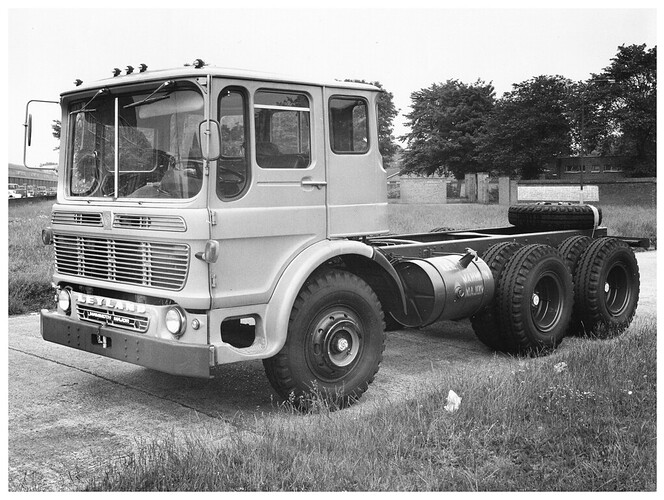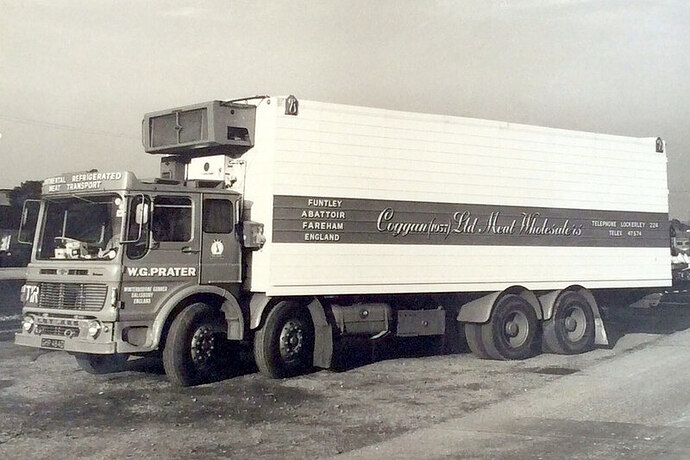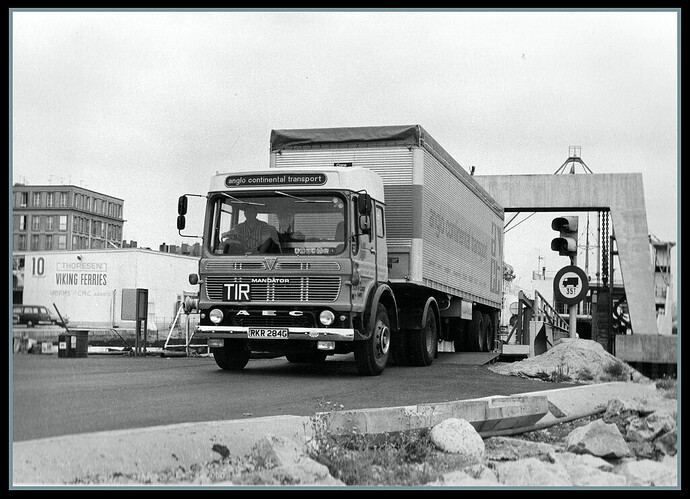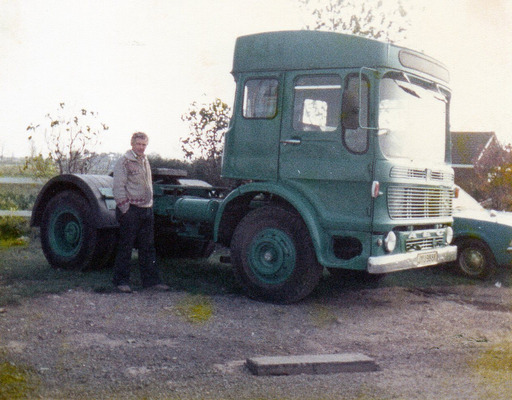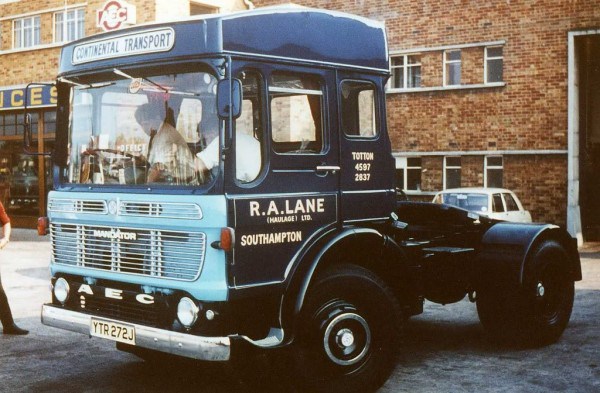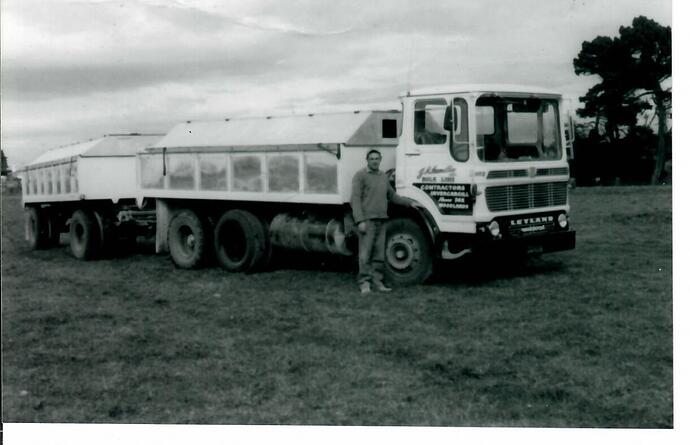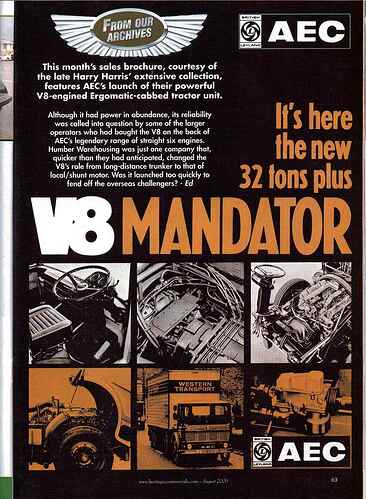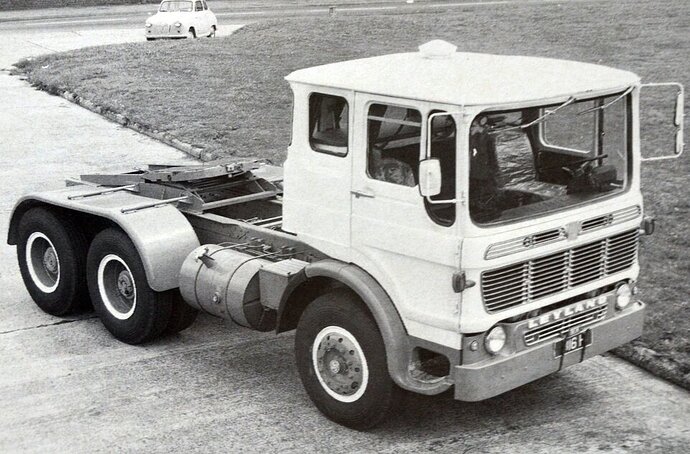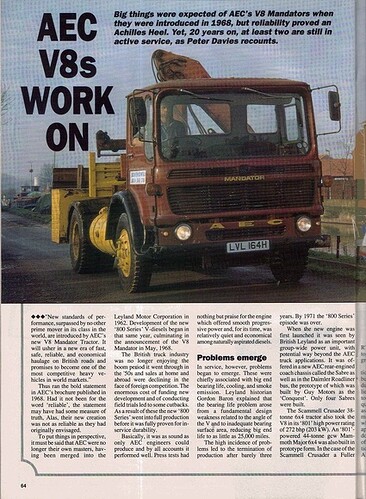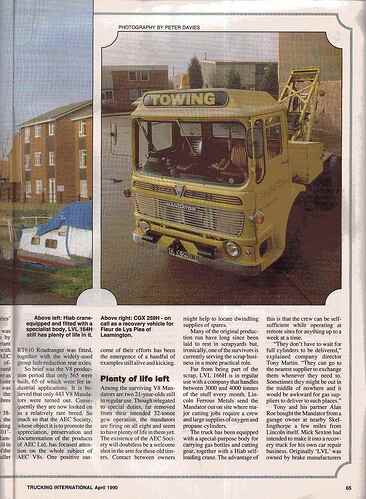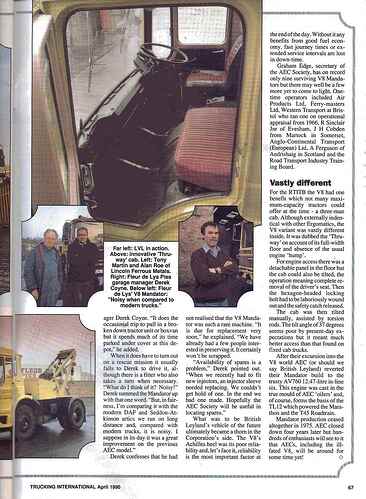ERF:
[zb]
anorak:
The gehuine Ergo sleeper has a longer window, two depressions around that window and an external spotweld seam between the quarter panel and the back panel. The high roof one has only one depression around the glass, the back panel is all one piece with the quarter panel and the coachbuilder has left his mark with a trim strip between that panel and the fill-in panel behind the wheelarch.I reckon those cabs were day cabs when they got to the ice cream van factory, and those craftsmen did the whole job of expanding them to their finished size…
My understanding of it (and I’m open to correction, as always) is that the high roof sleeper cab was manufactured entirely by Sankey / GKN. They were built using special side and rear pressings manufactured just for this cab. If you follow the gutter around the roof, you can see there is no overlap joint behind the door, indicating that the gutter was manufactured as one pressing incorporating the extended rear section, the same can be seen on the Sankey low roof sleeper cab.
“So what?” you ask, well the Ergomatic gutter is actually a complex pressing that extends under the roof skin and forms a box section that is part of the cab’s structural integrity. It is not pressed as part of the panels underneath it (screen aperture, door frame, rear panel), although it was supplied attached to these panels for service replacement. To extend the gutter (box section) pressing after manufacture is not impossible, but is difficult, which is why the likes of Jennings completely remove the rear part of it, weakening the cab in the process, and overlap the remainder with their sleeper conversion for this cab.
To the best of my knowledge, Leyland Group didn’t feature any aftermarket cab conversions in their marketing material. The high roof sleeper cab does appear in some brochures, notably the Mandator V8, but I can’t find it actually listed as an option in writing anywhere!. But then the low roof sleeper cab isn’t actually option listed in writing within any AEC marketing brochure that I have either…
I am also prone to correction(!). I thought I had read on one of the other Ergo threads (on TNUK) that the high roof ones were sent out to a fibreglass shop (Sparshatt’s■■?) to have their hats fitted, although I am starting to doubt it a bit now. The cab definitely looks shorter in the BBC dimension than the factory low-roof sleeper. The top looks very much like a moulding, as do the rear quarters.
With regards to the gutter panel, it would not be beyond a coachbuilder to cut and shut a factory panel, even to the extent of leaving a perfect ■■■■ joint. If the work was done for Leyland, as I was assuming, the supplier would be free-issued with whatever standard parts he wanted.
I will try to find the source of the information I have half forgotten. ![]() Edit- I’ve been through the “Best Ergo” thread up to page 18, with no success so far.
Edit- I’ve been through the “Best Ergo” thread up to page 18, with no success so far.
